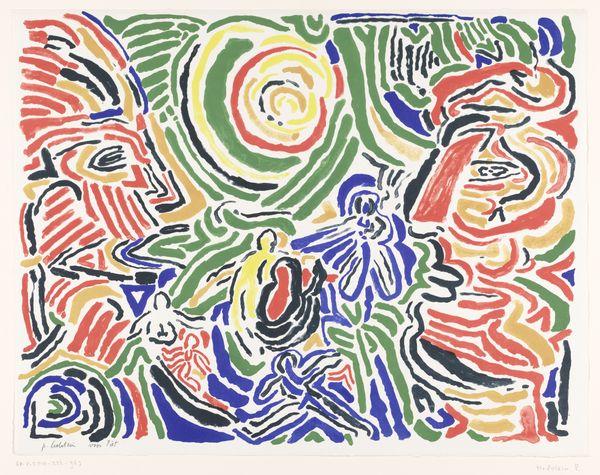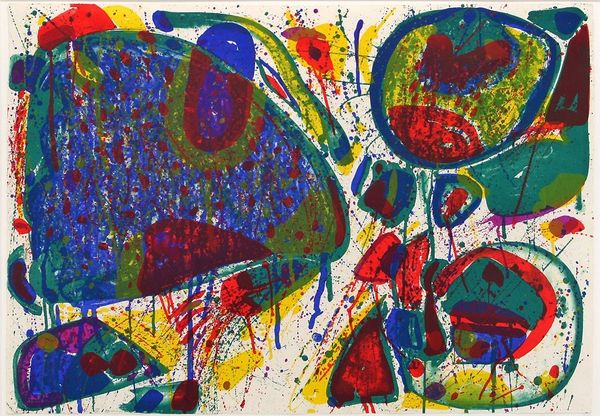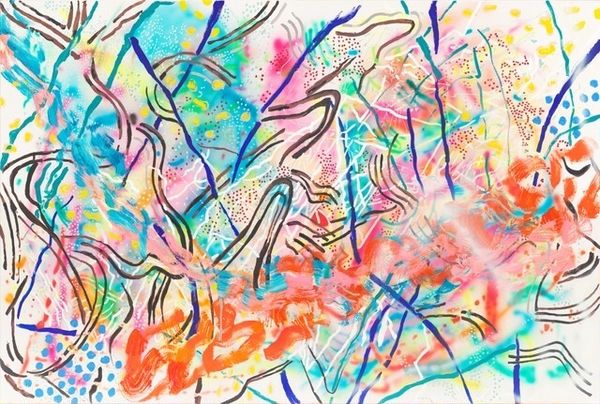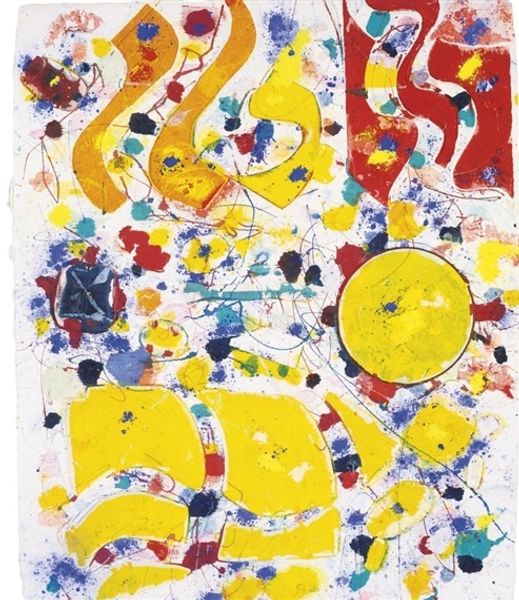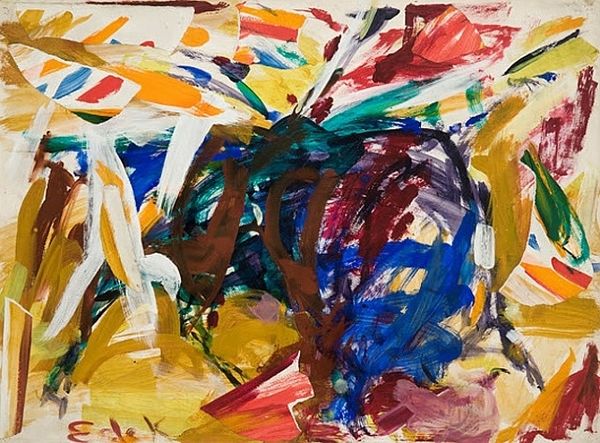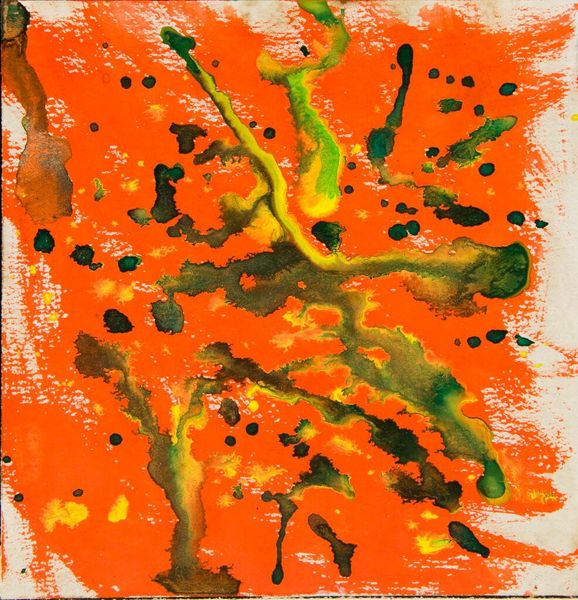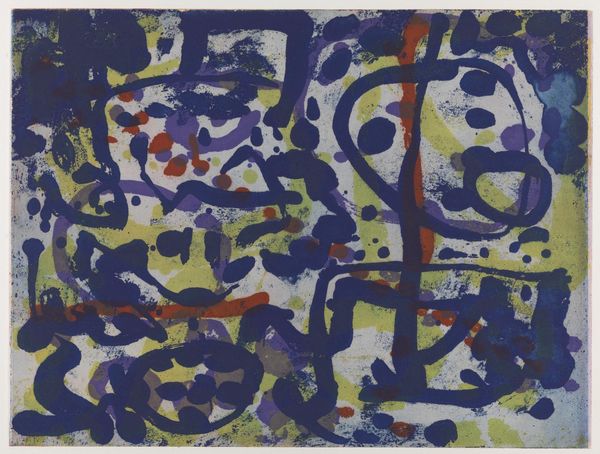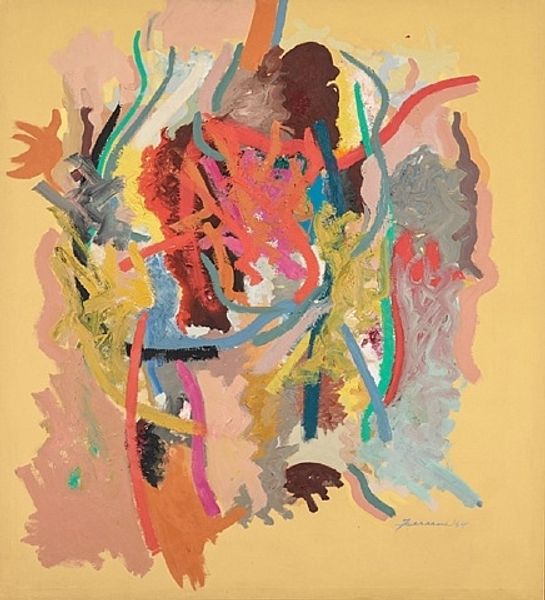
Copyright: Jean Messagier,Fair Use
Editor: Jean Messagier's "Machine pour Toulouse Lautrec," from 1991, created with acrylic paint, strikes me as incredibly energetic. The bright colors and frantic brushstrokes create a sense of restless movement. What do you see in this piece? Curator: What interests me is the title: "Machine for Toulouse-Lautrec". Immediately, I start considering the *means* by which this image was made. How does Messagier conceive of his practice in relationship to an artist known for chronicling nightlife? Was Messagier using a process to depict a certain culture, just like Toulouse-Lautrec did? Editor: That’s a really interesting point, how the "machine" aspect intersects with culture. Is he suggesting a kind of mechanical, reproducible aspect to Toulouse-Lautrec's subject matter? Curator: Precisely! Think about the context of 1991, and acrylic paint itself. Acrylics allowed artists increased options of production at greater volumes. Are the vibrant colors an attempt to highlight accessibility? It's almost a mechanized or industrialized approach to Fauvism’s use of bright color, made readily available. Editor: So, you're focusing on the industrialization of art production as a key element of this piece and maybe making a comment on cultural availability. The brushwork appears gestural and personal. Does that fight against your "machine" interpretation at all? Curator: Not necessarily, because it speaks to a different sort of labor. Think about the artist, wrestling with the new industrialization of their medium to create authentic marks within a context dictated by industry and capital. It speaks to the consumption of both materials and the Fauvist style. The line work too may reference older artistic styles rendered on a larger scale. Editor: I never would have considered this painting from that perspective! Considering it in the context of material accessibility and mass production gives me a whole new appreciation for it. Thanks! Curator: Glad I could help to illuminate this artwork, viewing its material and production choices opens a new lens of interpretation and also reminds us to always look for that reference of material.
Comments
No comments
Be the first to comment and join the conversation on the ultimate creative platform.
